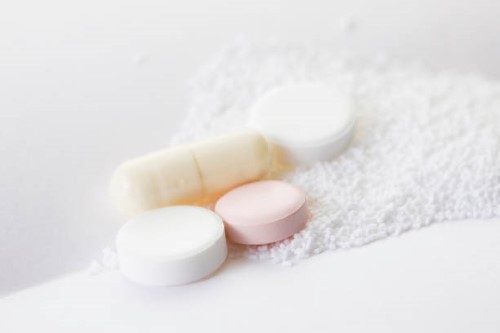What's The Function Of A Tablet Binder?

Binders are the substances which holds together the powders within tablets.
It is not necessary that fillers be good binder, since their own binding
capacity is not as effective. Tablet binders are added to a dry mix before
granulating, and they are used to create a matrix. They function as glues by
binding the powders. Binders can be classified as solid or wet, according to
whether they're water-soluble or insoluble.
Starch
In tablet manufacturing, starch is typically a key component. Starch is a key
ingredient in tablet production. It is able to fill the gap between the drug and
tablet surfaces. Its flexibility makes it a great binder for pharmaceuticals.
However, it is not without its drawbacks. Granular starch is water insoluble and
requires a heating process to activate its polymer which leads to a number of
issues.
Tablet-binding starches are identified by their properties. Compressible
starch powder is typically comprised of between 15 and 85 percent of dry
granulated, starch, and a significant amount of wet binder for granulation. This
powder results in altered granules which are more compacted and dispersed than
normal. It's a great binder, particularly when compressed. This article will
explore a variety of ways to use starches in the production of capsules and
tablets.
Starch-based binder is often utilized in the manufacturing of medicinal
tablet formulations. Starch is utilized in pharmaceutical manufacturing to
disintegrate and as a dissolvant. Tablet production is largely with fresh starch
paste at amounts of 5 to 15 percent. Other new applications for starch include
periodontal and nasal system for drug delivery. These may require changes to
existing starches or the creation and development of novel sources.
Povidone
Povidone is a synthetic polymer. It is a water-solubleand nonionic binder,
which is used in tablet formulations. Povidone is used in varying levels in
tablet formulations and is commonly included in tablets as binder in 0.5 percent
to 5 w/w strength. The solubility of povidone in water ranges from 1 to 2
percent, and different concentrations give different molecular weights.
In a study, researchers examined the kinetics of a model substance,
raloxifene in a tablet containing different binding agents. Researchers found
that raloxifene emitted faster from tablets with different levels of povidone
(including PEG-PVA or lactose). The highest povidone concentration K30 LP was at
30 ppm and PEG-PVA binding agents contained 17 peroxides per milliliter.
In the case of stability of the dosage forms of pharmaceuticals, it is
crucial to select the appropriate binding agents. The use of smart packaging and
the addition of antioxidants can help alleviate this problem. Furthermore,
PEG-PVA does not contain residual peroxidesthat can slow the process of reducing
oxidative damage to raloxifene. Keep in mind that stability is the primary
factor when choosing a tablet binder.
Okra fruit mucilage
There are many uses for Okra mucilage from the fruit in the pharmaceutical
sector. In addition to being an inexpensive raw material, it's a great
technological resource for manufacturers of food and beverages. Its mucilage, or
gel-forming material, can be used to make an colored
Pill Mix and is an excellent option for oral administration. Furthermore,
okra mucilage could also be used to make a wide range of other products.
For example, polyacrylamides can be used in the production of pharmaceutical
grade products. Polysaccharides are, however, not biodegradable. They are often
added to polysaccharides to boost their biodegradability. Okra Mucilage from
fruits is one such polymer. When combined with polyacrylamide it may improve the
tablet binding properties, as shown by the results of a new study.
Polymers made of natural substances
The aqueous solution can be modified by using both synthetic and natural
polymers. They often include repeating units, blocks and hydrophilic group that
can be anionic, nonionic, or anionic, nonionic, or cationic. Synthetic polymers
may increase tablet hardness, but they can also affect dissolution performance.
They can be expensive and can have an adverse effect on the stability of the
tablet.
Polymers made from plants offer many advantages. They are able to act as an
adhesive to tablets, a diluent or superdisintegrant. They are biodegradable,
safe and easy to utilize, making the perfect pharmaceutical material. They also
increase the absorption and bioavailability of the drugs they are incorporated
into. These benefits have led the pharmaceutical industry to use greater amounts
of natural polymers in their formulations.
Natural binders are found in plant fibers. Cellulose is an insoluble natural polymer is the most frequently used pill binders. Gelatin, however, a product from the cow, has high bacterial counts and isn't considered to be a safe option. Natural polymers are more secure and more economical than other options. What are the benefits of natural polymers in tablet binding agents?
Wonderful article; I'm pleased I came. keep going. A private Clash Royale server called Master Royale Infinity provides monthly events, limitless gaming resources, and no restrictions on opening chests. Read right away to learn how to get free gems. Visit this page; using it is free.
ReplyDelete